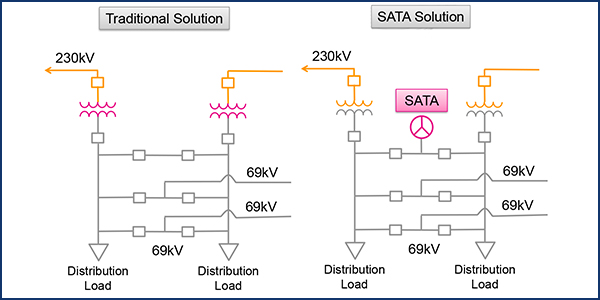Stakeholders voted Wednesday to delay endorsement of PJM’s proposal to develop rules for how storage should be considered in the Regional Transmission Expansion Plan (RTEP) process, electing to wait until further work is done on the issue.
A vote on the storage as a transmission asset (SATA) proposal was set for Wednesday’s Markets and Reliability Committee meeting after receiving 58% support at the Planning Committee meeting Dec. 1. (See PJM PC OKs RTEP Rules for SATA.)
But members decided to delay endorsement with a sector-weighted vote of 4.33 (86.6%), surpassing the 66% threshold to support the motion to defer the issue.
Paul Sotkiewicz of E-Cubed Policy Associates made the motion to defer the SATA issue until the conclusion of Phase 2 of work planned by PJM. He said he wanted to see more done to address the points of operations, markets and planning as stated in the original issue charge approved at the May 2020 PC meeting and worked on at special sessions since June. (See SATA Issue Charge Moves Forward in PJM.)
Sotkiewicz said the issue charge was “ambiguous” about what is included in the scope for Phase 1 of SATA. Having a “comprehensive proposal” addressing concerns about SATA competition and energy capacity ancillary services market issues would provide a more complete proposal for stakeholders to vote on, he said.
“We can come back and have a discussion and vote on the comprehensive proposal after addressing all of these issues,” Sotkiewicz said. “As it stands, I think it’s pretty clear this is not ready for prime time.”
Sharon Segner, vice president at LS Power, asked if there were specifics on when PJM would begin work on Phase 2 and what would be discussed among stakeholders.
Stu Bresler, PJM senior vice president of market services, said the RTO originally intended to wait until FERC ruled on the Phase 1 proposal before taking up work on Phase 2. He said the grid operator would introduce an issue charge at the appropriate committees to initiate Phase 2 “as soon as possible.”
Bresler said PJM will have to decide which committees should take up the Phase 2 issue because it potentially touches on aspects of the Planning, Market Implementation and Operating committees.
PJM Proposal
Michele Greening of PJM stakeholder affairs discussed the work conducted on SATA, saying the Phase 1 effort was designed to explore existing transmission planning criteria, including performance measurement methodology. She said additional criteria were developed for evaluating SATA, addressing reliability, market efficiency, operational performance and public policy.
Greening said PJM specifically avoided examining SATA participating in the energy or ancillary services markets, deferring both measures to Phase 2.
Jeff Goldberg, a PJM senior engineer, said the proposal would establish RTEP requirements to ensure that SATA implementation maintains system reliability consistent with NERC standards. He said PJM’s SATA evaluation approach also seeks to prevent adverse impacts to the generation interconnection queue.
The proposal’s guiding principles state that Phase 1 reliability requirements be established to ensure that any Phase 2 dual use of SATA does not adversely impact reliability requirements, Greening said, and that SATA must remain connected to the transmission system while operating to address the system needs for which it was planned.
Amendments Proposed
Segner presented a friendly amendment to the PJM proposal, saying that developers should be included for consideration in the RTEP. She said LS Power takes the position that SATA is a better product for the market, where it should derive its revenues, but when it’s important for SATA to be transmission, storage developers of all types should be included in competition.
Segner said SATA competition is consistent with language in both the problem statement and issue charge, along with the proposal matrix developed and endorsed by the PC. She added that competition was anticipated throughout the stakeholder process.
“The stakes are very high for getting this issue wrong,” Segner said. “This is an infant market, and if it’s not done correctly, there will be consequences and a very significant impact.”
Market Monitor Joe Bowring said there is “absolutely no reason why” SATA shouldn’t be open to competition, which would ensure the least-cost application.
“Competition is core to the way PJM markets function,” Bowring said.
Segner’s friendly amendment raised objections, even while several stakeholders agreed that competition was an important point to include in the PJM proposal. Stakeholders objected to the timing of the amendment, saying it should have been discussed more thoroughly at the PC rather than being introduced before the final vote at the MRC.
A second friendly amendment, brought forward by Tonja Wicks of Duquesne Light Co., was prompted by objections. Wicks proposed a change in the Operating Agreement language from “net” charge/discharge costs to “settle” charge/discharge costs for a SATA receiving cost-based rate recovery.






